If well-designed, most people can appreciate how eye-pleasing a pool looks.
What we rarely think of is how all the different parts of a pool work together to provide us with such a luxury.
From drains to skimmers, pumps and filters, these pool parts all perform a specific function to help keep your pool in tip top shape.
The Operational Parts of a Pool
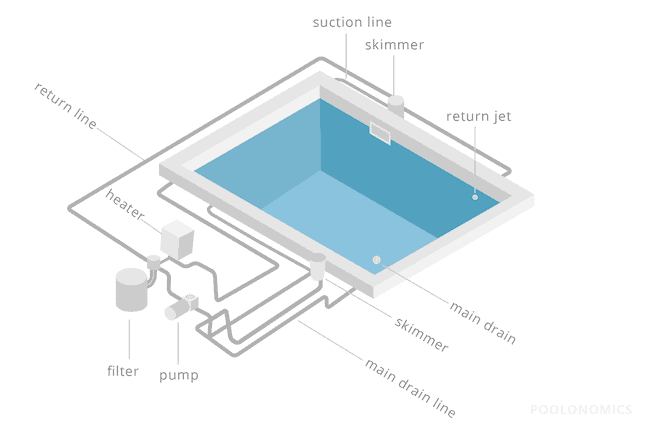
The first thing you need to understand about a pool is that once it’s filled with water, barring any cataclysmic events, that water will remain in the pool for potentially 3 to 5 years.
If you’ve ever reused bath water or dishwater, you know how quickly it can be polluted, and how unbelievably gross it is to reuse that water.
Enter sanitizing chemicals. These are added to the pool water on a regular basis and keep the water clean and safe for swimming. Without sanitizers such as chlorine, or bromine, your pool will quickly become a biohazard, and would most likely be declared a toxic waste site after a few short months.
Therefore, a pool’s main goal is to constantly circulate sanitizing chemicals throughout the pool, as well as any other chemicals needed to keep the water chemistry balanced.
It does this by using a 3-part automated pool circulation and filtration system consisting of various pool equipment:
- The suction side is what pulls (or sucks) the water into the circulatory system, and it includes the skimmers, main drains and suction lines.
- The filter system is what processes and cleans the water being pulled in from the suction side, and it includes the pre-filter, pump, filter, and sometimes a heater, chemical feeder and/or saltwater generator.
- The return side is what pushes (or returns) the filtered water back out to your pool, and it includes the return lines, return jets, and sometimes a mix of different water features.
Let’s go over each of the parts in more detail, following the flow of water from both an inground or above ground swimming pool.
Skimmers
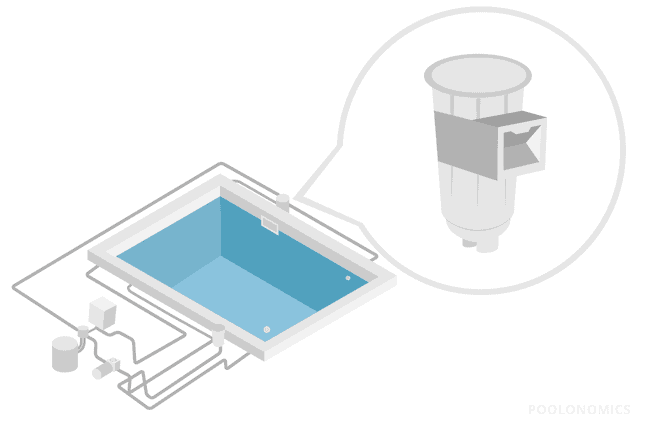
The circulation process starts at the pool’s skimmers.
These are buckets (usually 2, although above ground pools have only 1) that are built into the wall of the pool and are positioned at the waterline.
Inside the skimmer is a basket which is used to trap large objects that might be floating in the water, such as leaves and bugs. The skimmer basket catches this debris so that it won’t clog up the filter that is further down the line.
Additionally, skimmer baskets can also be used to distribute chlorine throughout the pool. This is done by adding a slow-releasing chlorine tablet(s) to the basket. As the skimmer is a high flow area of the pool, the water will move over the basket and dissolve the tablet in an effective manner.
Main Drains
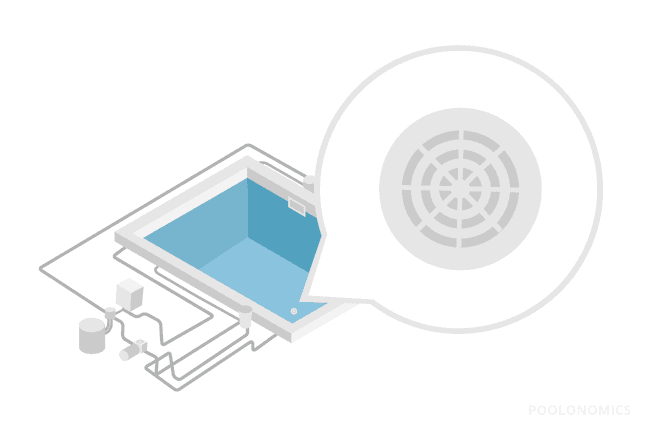
Main drains can be found in the deep end of the pool and they work alongside the skimmers to pull water in. These dual suction drains enhance circulation, pulling in water from the depths of the pool while the skimmers pull in from the top.
The main drains are also used when draining the pool, but their main job is as a circulation starting point. 2 drains are standard on new pools, splitting the suction force as a safety precaution in case one of them gets blocked.
Suction Lines
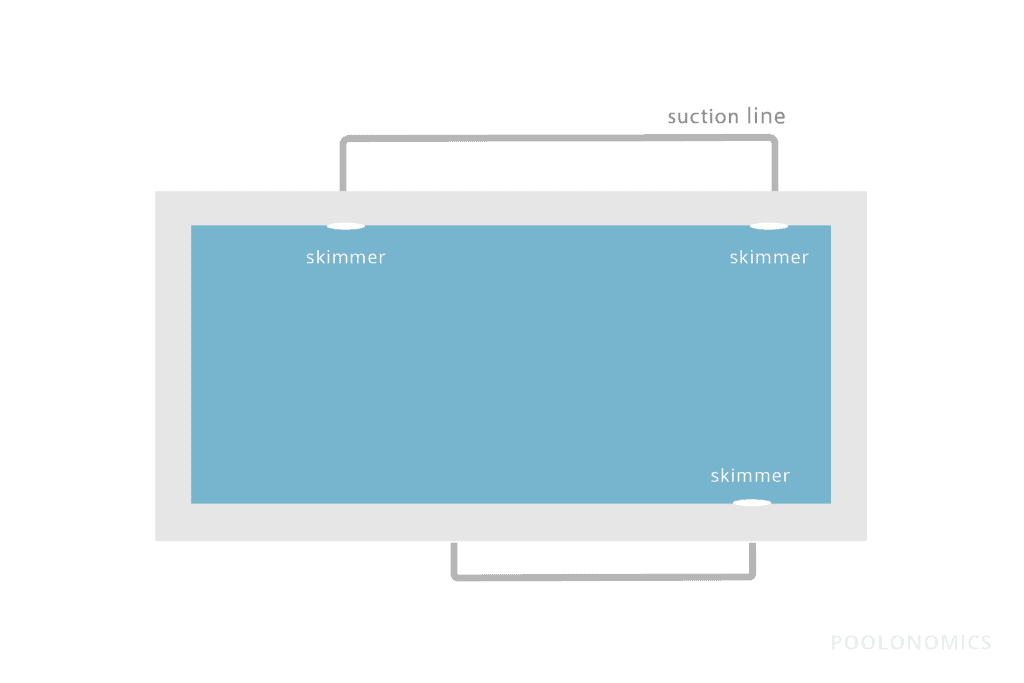
Once the water is sucked in by the skimmers and main drains, it goes into the suction lines. These lines are PVC pipes that move the water from the skimmers and drains to the pump.
Pre-filter (Optional)
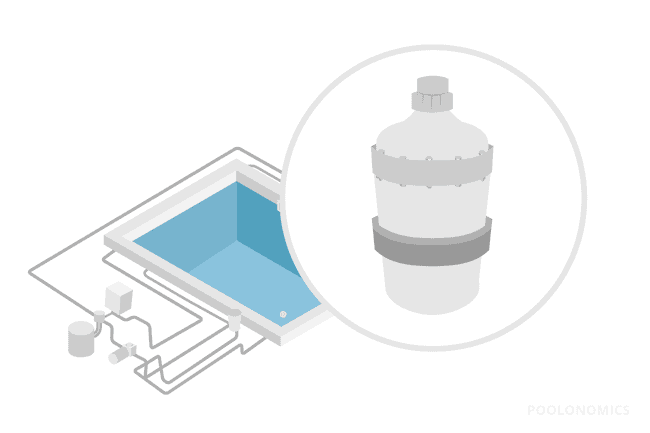
On its way to the pump, some pools will pass the water through a pre-filter basket, sometimes called a pool pump strainer or pump pot basket.
Its function is to further filter out any large debris that may have been missed by the skimmer basket or entered via the main drains.
Pump
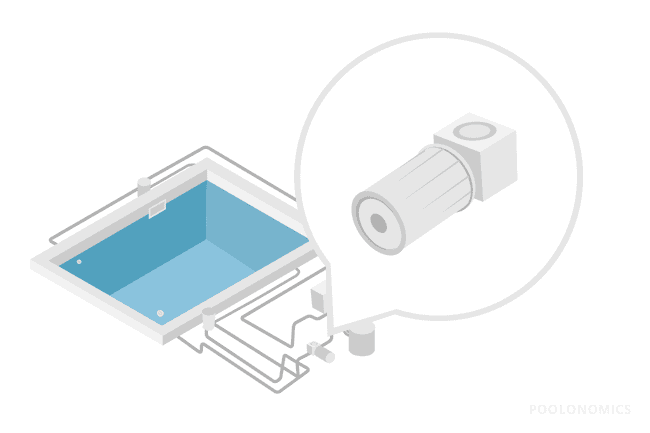
While you might think of a pool pump as only pushing, or “pumping” water, that’s only half of what it does.
The first thing it’s responsible for is creating the suction that pulls the pool water into the main drains and skimmers. This is done by it’s impeller which is powered by a motor ranging from ¾ to 3 horsepower.
Depending on your pool size, you may need a very large pump size, as large bodies of water require more horsepower to move. The impeller spins rapidly and creates a vacuum to pull the pool water into the filtration system.
There are three types of pool pumps: single speed, two-speed, and variable speed.
Single speed pumps work at 1 speed, 2-speed pumps have dual speeds (high and low), and variable pumps can be set at various speeds.
Variable speed pumps are the preferred pumps today as they give you more control over water circulation, consume less energy, and save you money on your monthly bills.
Filter
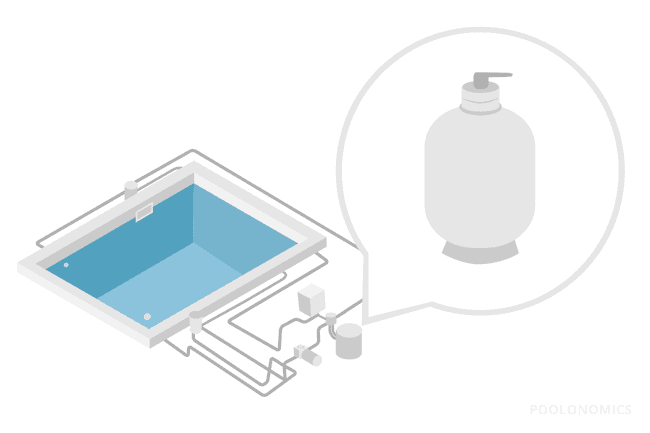
After going through the pool pump, the water is then sent through a filter.
You might wonder why the filter is needed if sanitizing chemicals are always present in the water.
Unfortunately, chlorine, bromine, or biguanide chemicals won’t get rid of everything in the water, which is where filters come in.
Passing the water through a filter will keep the sanitizing chemicals present while removing small debris, particle-level impurities, and bacteria in the water.
There are 3 types of pool filters that can purify the water: cartridge filter, sand filter, or DE (diatomaceous earth) filter.
Heater (Optional)
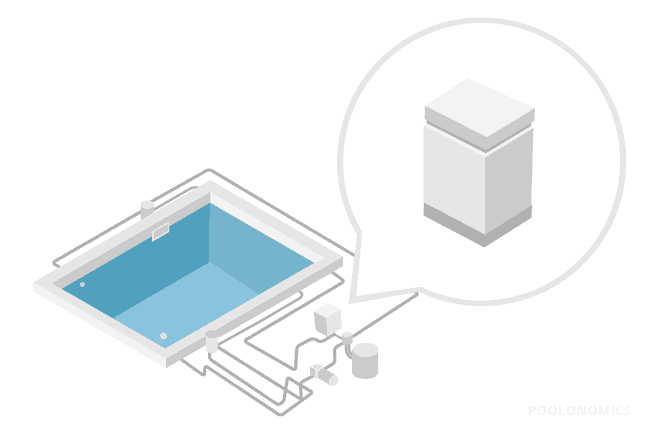
Adding a pool heater is an optional feature, but one that many pool owners gravitate to, especially if they live in a cooler climate.
There are three kinds of heaters to choose from: solar, gas, or heat pumps (electric).
Solar panels are the most convoluted heater, and they require large solar panels to harness sunlight, be hooked up to your water system, and inject the water with heat.
Gas heaters require natural gas or propane to heat metal coils the water passes over on its way back to the pool, and heat pumps operate by pulling in heat from the air and sending it into the pool water.
Using a solar pool cover will also help as it keeps heat from escaping through the surface of the pool.
Chemical Feeder (Optional)
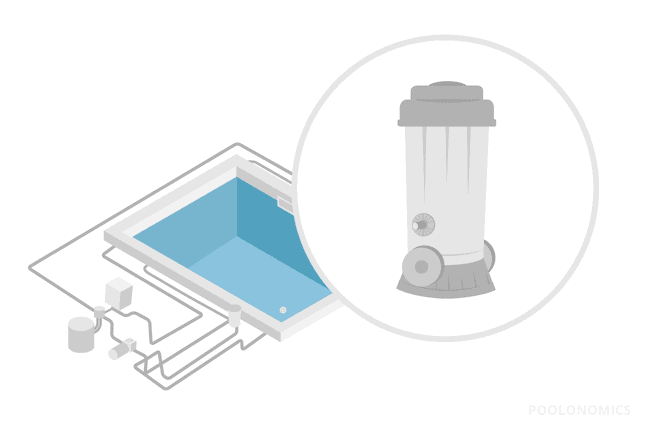
A chemical feeder is an optional feature but comes after the heater in the chain of events.
This device automatically feeds the pool with chlorine, bromine, or minerals, replacing the need to use a floating dispenser, or placing tablets in the skimmer basket for sanitizing purposes.
As it’s fully automated, this feeder is a set-it-and-forget-it feature that is highly appealing to some.
Saltwater Generator (Optional)
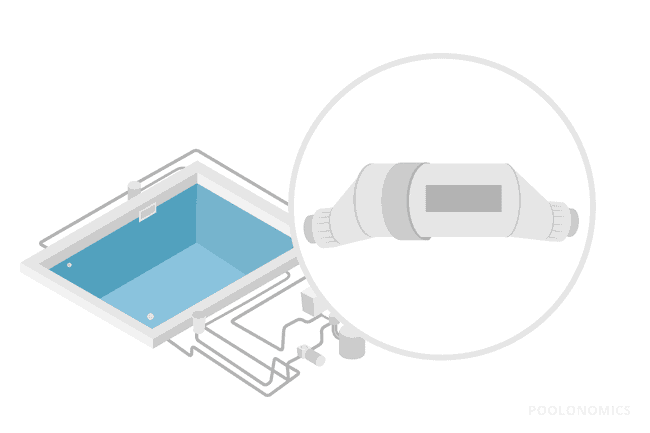
This generator replaces the chemical feeder option for saltwater pools.
Also called a salt cell, it uses the same automated concept as a chemical feeder, but it steadily converts salt in the water to chlorine, keeping the pool sanitized.
If you don’t have a salt pool, neither a feeder or generator needs to be added to the system as long as sanitizer is being added to the water in a traditional manner.
Return Lines
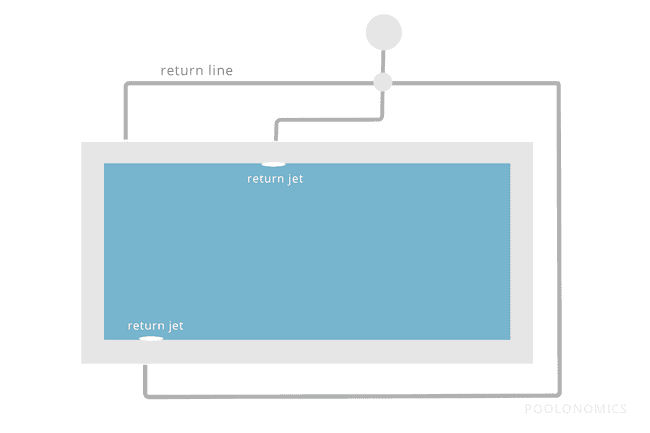
After the water goes through the filter (and any optional devices), the return lines send it back to the pool.
Similar to the suction lines, these lines are made of PVC piping which stop at the return jets.
Return Jets
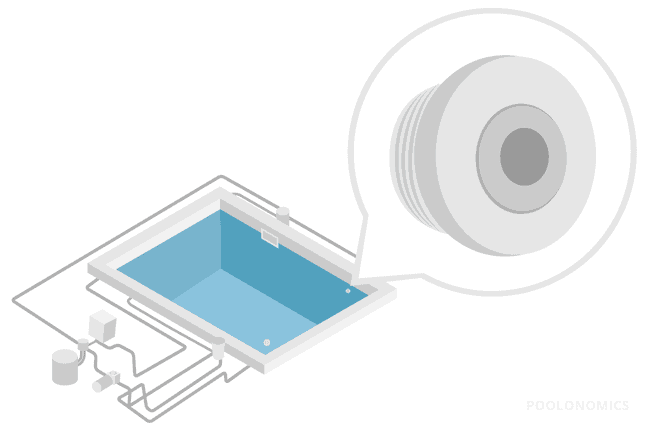
The return jets are the small holes on the pool walls that inject the pool with freshly filtered water. There are usually 2 or 3 of them in an inground pool, while above ground pools only use 1.
Sometimes called eyeballs, they shoot this “new” water at a strong pressure to help it mix with existing sanitizers in the water, making for a clean and balanced pool.
Water Features (Optional)
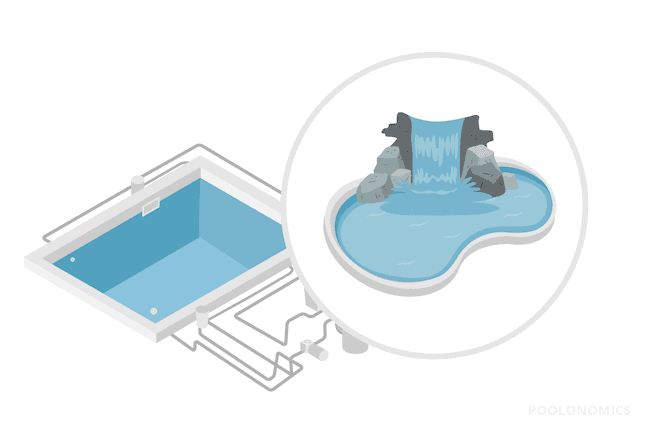
Some pools will include various water features that require water be separately directed to them.
Things like deck jets, bubblers, waterfalls, and grottos all need to have dedicated return lines, and in many cases will need a dedicated pump as well to power them.
It’s A Beautiful Cycle
The various parts of a pool work fluidly to provide people with a safe and clean swimming experience.
While there’s common parts to all pools (such skimmers, drains, PVC piping), there’s enough interchangeable and customizable options when it comes to pumps and filters that can be tailored to any type of pool and any budget.
